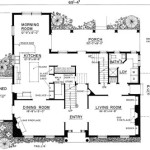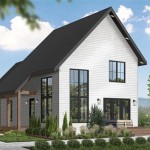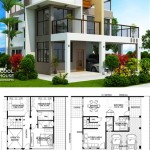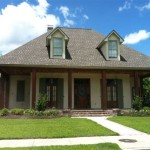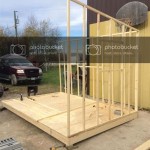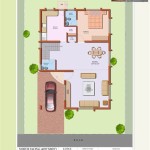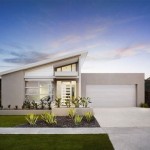Home-Built Brick Smoker Plans: A Comprehensive Guide
Constructing a brick smoker in one's backyard can provide an avenue for producing high-quality, smoked meats and other foods. Unlike commercially manufactured smokers, a home-built brick smoker offers a unique opportunity for customization and can be designed to fit specific needs and aesthetic preferences. This article provides a comprehensive overview of the necessary considerations and steps involved in developing and implementing brick smoker plans.
Planning and Design Considerations
Before commencing construction, meticulous planning is essential. This stage involves determining the desired dimensions of the smoker, the type of smoker design, and the materials required. The size of the smoker will dictate its capacity and, consequently, the amount of food that can be smoked simultaneously. Factors such as available space, budget, and anticipated usage frequency should inform the decision-making process.
Several smoker designs are viable options for brick construction, including vertical smokers, horizontal offset smokers, and cabinet smokers. Vertical smokers are generally more compact and efficient in terms of fuel consumption, making them suitable for smaller spaces and smaller batches of food. Horizontal offset smokers, also known as Texas-style smokers, feature a separate firebox that is connected to a smoking chamber. This design allows for indirect heat, which is beneficial for slow-cooking larger cuts of meat. Cabinet smokers offer a large capacity and can accommodate multiple racks of food, making them ideal for large-scale smoking operations.
Material selection is another critical aspect of the planning phase. Firebricks are the preferred material for the firebox and the lower portion of the smoker due to their ability to withstand high temperatures. Standard bricks can be used for the remainder of the structure. Mortar specifically designed for high-temperature applications is essential for binding the bricks together. Additional materials may include metal grates for holding the food, a chimney for venting smoke, and a door for accessing the smoking chamber. A detailed bill of materials should be compiled to ensure accurate procurement and budget management.
Foundation and Base Construction
A solid foundation is crucial for the structural integrity of the brick smoker. The foundation should be level, stable, and capable of supporting the weight of the smoker. A concrete slab is often recommended as the foundation, providing a durable and even surface. The dimensions of the slab should be slightly larger than the footprint of the smoker to provide adequate support.
The construction process begins with excavating the area for the foundation and pouring a concrete slab. Reinforcement with steel rebar is advisable to enhance the strength and durability of the slab. The concrete should be allowed to cure for the recommended period, typically several days, before commencing bricklaying.
Once the foundation is prepared, the base of the smoker can be constructed. This typically involves laying the first course of bricks in a level and square pattern. Mortar should be applied evenly between the bricks to ensure a strong bond. A bricklayer's level should be used frequently to verify that the base is level and plumb. Subsequent courses of bricks are then laid, staggering the joints for added stability. The base should be built to a height that is comfortable for accessing the smoking chamber and managing the fire.
Firebox and Smoking Chamber Construction
The firebox is the heart of the smoker, and its construction requires careful attention to detail. The firebox should be lined with firebricks to protect the surrounding structure from the intense heat. The firebricks should be laid using high-temperature mortar, ensuring that all joints are sealed to prevent air leaks. A metal grate should be installed within the firebox to support the fuel, allowing for proper airflow and combustion.
The design of the firebox should allow for adequate ventilation to control the temperature and smoke production. Adjustable vents can be incorporated into the door of the firebox or at the base of the firebox to regulate airflow. The size of the firebox should be sufficient to hold enough fuel to maintain a consistent temperature for the desired smoking duration.
The smoking chamber is the space where the food is placed for smoking. The size and shape of the smoking chamber will depend on the desired capacity and the type of smoker design. The walls of the smoking chamber can be constructed using standard bricks, laid in a staggered pattern for stability. Metal grates or racks should be installed within the smoking chamber to provide a surface for holding the food. The height of the racks should be adjustable to accommodate different sizes of food.
A chimney is essential for venting the smoke from the smoking chamber. The chimney should be located at the top of the chamber and should be of sufficient height to create a draft. A damper can be installed in the chimney to regulate the airflow and control the temperature within the smoking chamber.
The door of the smoking chamber should be constructed from a durable material, such as steel or cast iron. The door should fit tightly to prevent smoke from escaping and should be insulated to minimize heat loss. A thermometer should be installed on the door to monitor the temperature within the smoking chamber.
Key Design Elements and Functionality
Effective air circulation is paramount for uniform smoking. The design of the smoker should facilitate the movement of smoke throughout the smoking chamber, ensuring that all food receives consistent exposure. This can be achieved by strategically positioning the air inlets and outlets, as well as by incorporating baffles or deflectors to direct the airflow.
Temperature control is another critical aspect of smoker design. The ability to maintain a consistent temperature within the smoking chamber is essential for achieving optimal results. This can be accomplished by regulating the airflow to the firebox, adjusting the damper in the chimney, and insulating the walls of the smoking chamber. A reliable thermometer is crucial for monitoring the temperature and making necessary adjustments.
Proper insulation can significantly improve the efficiency of the smoker and reduce fuel consumption. Insulating the walls of the smoking chamber helps to retain heat and maintain a consistent temperature. This can be achieved by using insulating materials such as fiberglass or mineral wool, or by constructing double-walled brick construction with an air gap. The door of the smoking chamber should also be insulated to minimize heat loss.
Safety Considerations and Maintenance
Operating a brick smoker involves inherent safety risks, primarily related to the high temperatures and the use of fire. It is essential to take precautions to prevent burns and fires. The smoker should be located in a well-ventilated area, away from flammable materials. A fire extinguisher should be readily available in case of emergencies. Protective gloves and eyewear should be worn when handling hot materials or working near the fire.
Regular maintenance is necessary to ensure the longevity and performance of the brick smoker. The firebox should be cleaned regularly to remove ash and debris. The chimney should be inspected periodically for obstructions and cleaned as needed. The bricks and mortar should be inspected for cracks or damage and repaired promptly. The metal grates and racks should be cleaned after each use to prevent the buildup of grease and residue. Cover the smoker when not in use to protect against the elements.
Creosote buildup is a common issue in smokers, especially those that are not properly ventilated. Creosote is a flammable substance that can accumulate in the chimney and smoking chamber, increasing the risk of a chimney fire. To prevent creosote buildup, it is important to maintain a clean-burning fire and ensure adequate ventilation. The chimney should be inspected and cleaned regularly to remove any accumulated creosote.

Building Your Own Grill Or Smoker

How To Build A Brick Bbq Bbqsearch Com Smoker Plans

Classic Brick Smoker Kingbird Design
Home Made Brick Smoker Grill Pitmaster Club

How To Build A Brick Smoker Home Design Garden Architecture Blog

60 Diy Smoker Plans A Complete Guide To Building

Build The Ultimate Blockwork Offset Smoker Toolmates Hire

How To Build A Brick Bbq All You Need Know Checkatrade

How To Build A Brick Bbq Smoker Part 1

Classic Brick Smoker Kingbird Design

